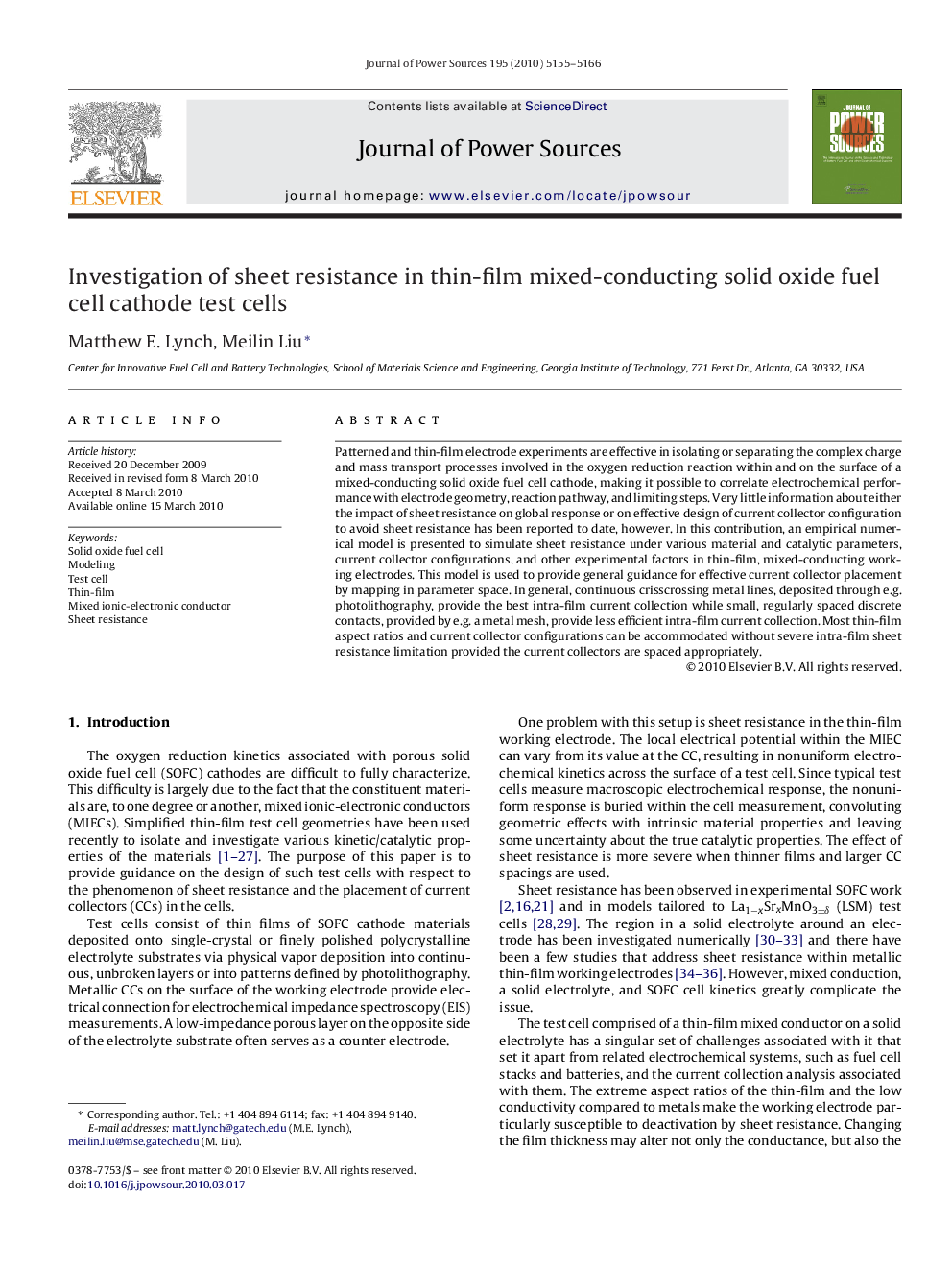| Article ID | Journal | Published Year | Pages | File Type |
|---|---|---|---|---|
| 1284912 | Journal of Power Sources | 2010 | 12 Pages |
Patterned and thin-film electrode experiments are effective in isolating or separating the complex charge and mass transport processes involved in the oxygen reduction reaction within and on the surface of a mixed-conducting solid oxide fuel cell cathode, making it possible to correlate electrochemical performance with electrode geometry, reaction pathway, and limiting steps. Very little information about either the impact of sheet resistance on global response or on effective design of current collector configuration to avoid sheet resistance has been reported to date, however. In this contribution, an empirical numerical model is presented to simulate sheet resistance under various material and catalytic parameters, current collector configurations, and other experimental factors in thin-film, mixed-conducting working electrodes. This model is used to provide general guidance for effective current collector placement by mapping in parameter space. In general, continuous crisscrossing metal lines, deposited through e.g. photolithography, provide the best intra-film current collection while small, regularly spaced discrete contacts, provided by e.g. a metal mesh, provide less efficient intra-film current collection. Most thin-film aspect ratios and current collector configurations can be accommodated without severe intra-film sheet resistance limitation provided the current collectors are spaced appropriately.
